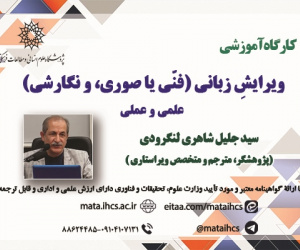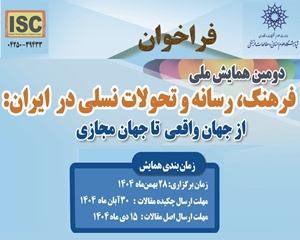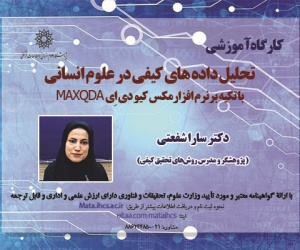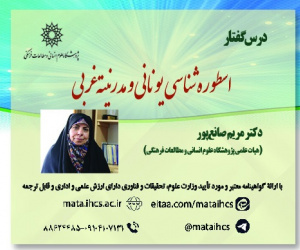سنگ قبرهای صفوی و قاجاری روستای استرک کاشان (مقاله علمی وزارت علوم)
درجه علمی: نشریه علمی (وزارت علوم)
آرشیو
چکیده
استرک روستایی باستانی در کاشان است که بنابر کاوش های باستان شناختی، سابقه زندگی در آن تا عصر آهن امتداد دارد. در قبرستان قدیمی این روستا نزدیک به چهل سنگ از دوران صفوی و قاجاری باقی مانده است. این سنگ قبرها متعلق به سده یازدهم تا چهاردهم هجری است که در بیشتر آن ها به جز کتیبه نام متوفا و تاریخ وفات، کتیبه های دینی شامل عبارت های قرآنی و شعارها و ادعیه شیعی و اشعار فارسی به چشم می خورد. هدف اصلی این مقاله، بررسی نقوش و خوانش کتیبه ها و تحلیل محتوای آن هاست. این پژوهش به دو صورت مشاهده ای و اسنادی انجام شده است. این پژوهش با روشی تحلیلی در پی پاسخ به این پرسش است که سنگ قبرهای صفوی تا قاجاری قبرستان قدیم استرک به لحاظ فرمی و نقوش دارای چه ویژگی هایی است و در کتیبه های آن، چه محتوای دینی و فرهنگی بازتاب یافته است؟ یافته های پژوهش نشان می دهد که در سنگ قبرهای سده یازدهم که عموماً به صورت صندوقی و طرح سرو است، صلوات کبیره و آیت الکرسی کار شده است. در سده دوازدهم که سنگ ها به صورت تخت قدی است، آیت الکرسی حذف و فقط صلوات کبیره کتیبه کاری شده است. در سده سیزدهم با نوعی از سنگ قبر قدی روبه رو هستیم که دارای نقوش گیاهی و حیوانی است. سرو و محراب این دسته سنگ ها ملهم از نقوش سده یازدهم این مزار است، اما در آن مرغ و مار نیز کار شده است، کتیبه های صلوات کبیره نیز جای خود را به نمونه های جدیدتر شعارهای شیعی و اشعار فارسی رثا داده است. شعر فارسی در سنگ قبرهای سده چهاردهم چشمگیر است. در برخی از این سنگ قبرهای کوچک نقوش آینه، شانه و تسبیح کار شده است. این سنگ قبرها تصویری از وضعیت دینی و فرهنگی یک آبادی شیعی در دوران صفوی و قاجاری را به تصویر کشیده و نشان می دهد که در طول این چند قرن سنگ قبرها کوچک تر و نقوش آن ساده تر شده و کتیبه های دینی جای خود را به اشعار فارسی شخصی و غیردینی داده است.Safavid and Qajar Tombstones of Estark Village, Kashan, Iran
Estark is an ancient village in Kashan, Iran, whose habitation dates back to the Iron Age, as confirmed by archaeological excavations. Nearly forty tombstones from the Safavid and Qajar periods have remained in the old cemetery of this village. These tombstones date back to the 11th to 14th centuries AH. In addition to inscriptions containing the name of the deceased and their date of death, many of these stones bear religious inscriptions, including Quranic verses, Shiite slogans and supplications, as well as Persian poetry. The main objective of this article was to examine the motifs, read the inscriptions, and analyze their content. This research was conducted through both observational and documentary methods. Using an analytical approach, the study aimed to evaluate the formal and artistic features of Safavid and Qajar tombstones in the old Estark cemetery, as well as the reflection of religious and cultural content in their inscriptions. There were inscriptions on the tombstones from the 11th century AH that include Salawat Kabira and Ayat al-Kursi, which are mainly box-shaped with cypress motifs. In the 12th century AH, the stones became flat and vertical, with Ayat al-Kursi omitted and only Salawat Kabira inscribed. In the 13th century AH, a type of upright tombstone emerged, featuring motifs of plants and animals. The 11th-century designs inspire the cypress and mihrab motifs in these stones, but now also include birds and snakes. Newer Shiite slogans and Persian elegiac poetry replaced the Salawat Kabira inscriptions. Persian poetry gained prominence in the 14th century AH, as evidenced by tombstones. On some more miniature gravestones, motifs such as mirrors, combs, and rosaries were depicted. These tombstones portrayed the religious and cultural state of a Shiite village during the Safavid and Qajar eras, showing that over the centuries, tombstones became smaller, their motifs became simpler, and religious inscriptions gave way to more personal and non-religious Persian poetry.








